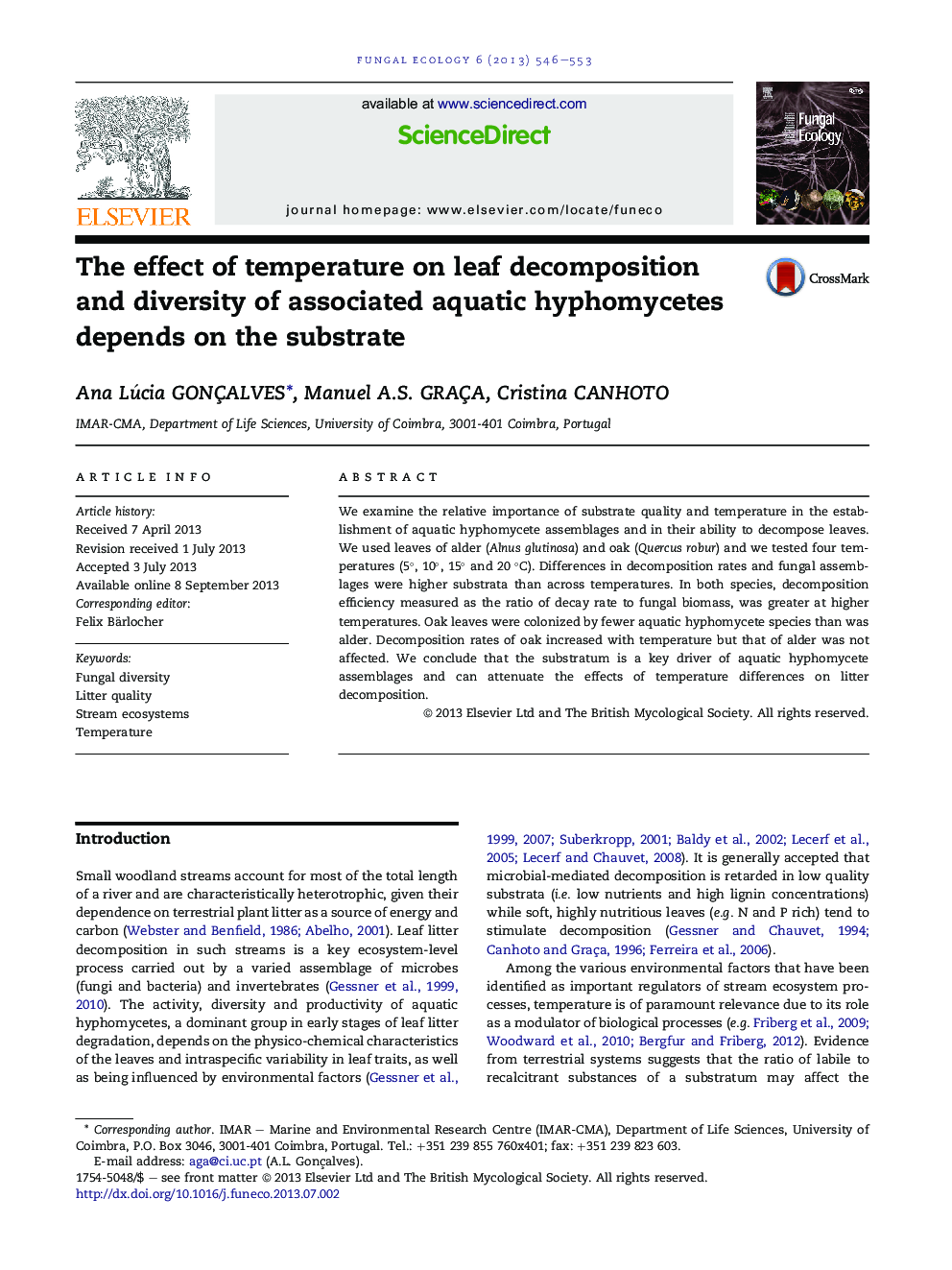| کد مقاله | کد نشریه | سال انتشار | مقاله انگلیسی | نسخه تمام متن |
|---|---|---|---|---|
| 2053861 | 1075578 | 2013 | 8 صفحه PDF | دانلود رایگان |

• We evaluated fungal performances at 5, 10, 15 and 20 °C in alder and oak leaves.
• Differences were higher across substrates than across temperatures.
• Decomposition efficiency was higher at high temperatures in oak and alder leaves.
• Oak leaves decomposition rates increased with temperature.
• Alder leaves decomposition was less affected by temperature increases.
We examine the relative importance of substrate quality and temperature in the establishment of aquatic hyphomycete assemblages and in their ability to decompose leaves. We used leaves of alder (Alnus glutinosa) and oak (Quercus robur) and we tested four temperatures (5°, 10°, 15° and 20 °C). Differences in decomposition rates and fungal assemblages were higher substrata than across temperatures. In both species, decomposition efficiency measured as the ratio of decay rate to fungal biomass, was greater at higher temperatures. Oak leaves were colonized by fewer aquatic hyphomycete species than was alder. Decomposition rates of oak increased with temperature but that of alder was not affected. We conclude that the substratum is a key driver of aquatic hyphomycete assemblages and can attenuate the effects of temperature differences on litter decomposition.
Journal: Fungal Ecology - Volume 6, Issue 6, December 2013, Pages 546–553